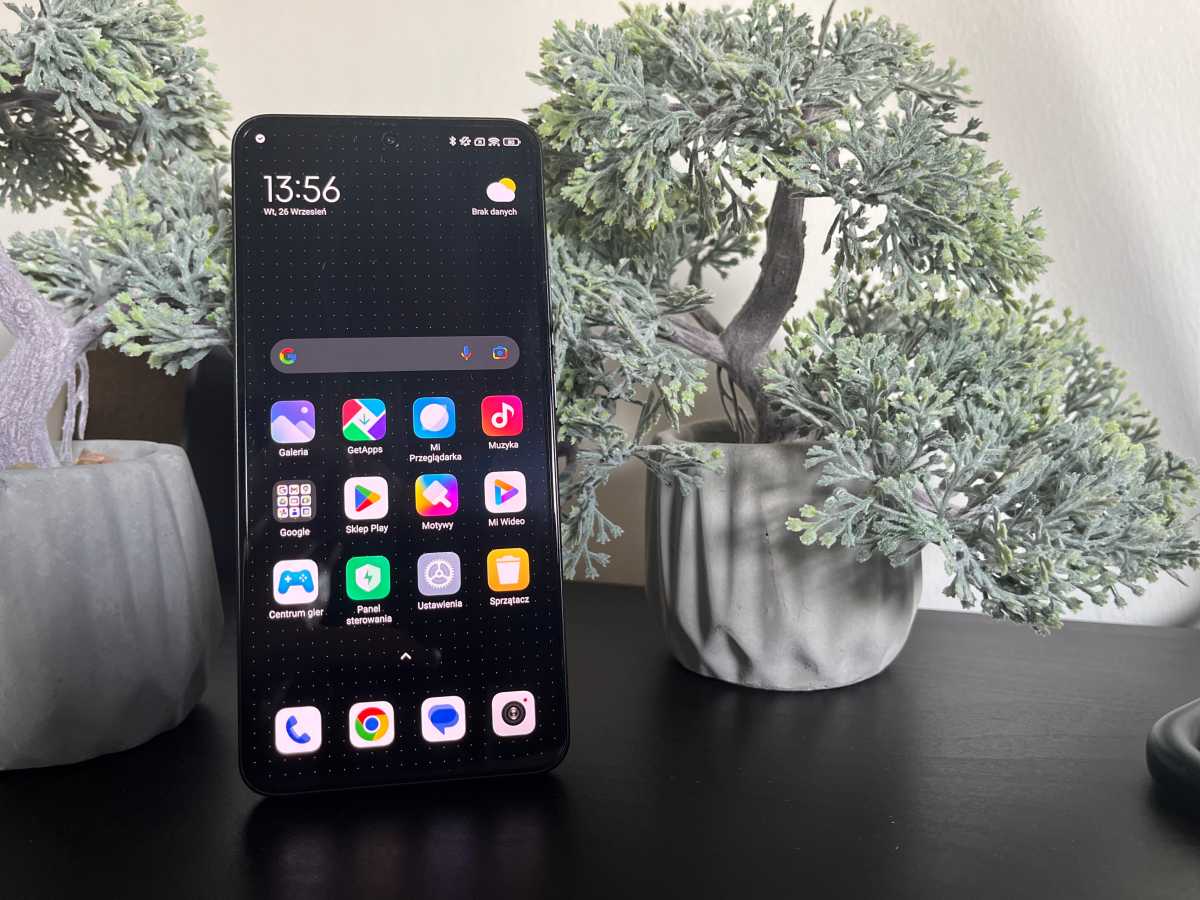Xiaomi might be best known in Europe for its flagship phones, but many of the company’s more affordable offerings are also worth considering.
Prime examples of this in 2023 were the Xiaomi 13T and 13T Pro, which cost £549/€549 and £649/€649, respectively, yet offered an array of premium features.
So, what can we expect from Xiaomi’s next set of mid-range smartphones? There are already plenty of rumours regarding what the Xiaomi 14T series will bring to the table. Here’s everything we know so far.
When will the Xiaomi 14T be released?
Nothing concrete has been revealed regarding the launch date of the Xiaomi 14T series yet. However, looking at previous generations, we can draw some conclusions:
- Xiaomi 11T series – September 2021
- Xiaomi 12T series – October 2022
- Xiaomi 13T series – September 2023
According to Passionategeekz, Xiaomi planned to release the Xiaomi 14T and 14T Pro on 23 August 2024. However, this didn’t happen.
With that in mind, it’s highly likely that Xiaomi will launch the 14T series in either September or October 2024, though that hasn’t been confirmed. And according to Android Headlines, we’ll see two models once again: the Xiaomi 14T and Xiaomi 14T Pro.
Xiaomi’s T-series phones are usually released in Europe at the same time as in China, so we expect that to be the same this time around. Their launch should include the UK, but won’t include the US; given Xiaomi doesn’t sell any of its hardware in North America.
How much will the Xiaomi 14T cost?
According to a French site Dealabs, the Xiaomi 14T will go for €649, featuring 12GB of RAM and 256GB of storage, while the 14T Pro will offer 12GB of RAM and 512GB of storage for €899.
For context, here are launch prices of the previous models:
As you can see, reductions in price are just as common as rises. If the rumoured prices are true, both phones will see big increases in price compared to the Xiaomi 13T series.
What specs and features will the Xiaomi 14T have?
Although we’re not expecting the Xiaomi 14T series until the (northern hemisphere’s) autumn, but there have already a few key rumours. The biggest source of information so far has been Android Headlines, which suggests the 14T Pro will be a rebranded version of the Redmi K70 Ultra that’s coming to China. That said, the Redmi also hasn’t released yet, meaning there’s still time for differences to manifest on the expected global version.
Assuming the regular 14T follows the trend of its predecessors, you can expect downgrades to the chipset, cameras and charging speed, compared to the 14T Pro. Here’s what we know and expect to be see.
Design
We don’t have much information on the design of the Xiaomi 14T series phones, however, we expect them to be very similar to the Xiaomi 14 and Xiaomi 14 Pro, as was the case with the Xiaomi 13 and Xiaomi 13T series.
Of course, there are likely to be at least some changes. Hopefully, the highly reflective glass back from the 13T and 13T Pro (which attracts fingerprint smudges and other visible marks) will be replaced with something more practical.

Artur Tomala / Foundry
Xiaomi could follow in the footsteps of Apple and Samsung, who used frosted glass on the iPhone 15 and Galaxy S24 series.
According to Passionategeekz, the Xiaomi 14T and 14T Pro will be available in Titan Blue, Titan Black, Titan Grey and Lemon Green colours, while the latter only for the Xiaomi 14T.
A French site Dealabs reports that the 14T measures 160.5 x 75.1 x 7.8 mm and weighing 195g, while the Pro is 160.4 x 75.1 x 8.39 mm and 209g.
Display
A French site Dealabs claims that both models will have a 6.67-inch AMOLED display with 144Hz refresh rate, 1220×2712 resolution, and a peak brightness of 4,000 nits.
However, according to a Chinese leaker Digital Chat Station via Weibo, the Xiaomi 14T Pro is expected to achieve an impressive 5000-nits, when displaying HDR content; setting a new record and outperforming rivals like the Samsung Galaxy S24 Ultra and the OnePlus 12.
The inclusion of a 1.5K resolution adds to the appeal. Notably, the LTPO panel will be better than before, allowing you to automatically move between 1 and 144Hz, depending on what you’re doing; the 13T Pro can only step down to 30Hz.
And given the Xiaomi 13T and 13T Pro offer the same displays, it can be assumed that the Xiaomi 14T will also receive the same front panel as its more powerful sibling.
Performance
Both the Xiaomi 14T and Xiaomi 14T Pro could be equipped with MediaTek’s Dimensity 9300, boasting remarkable power efficiency and performance; setting them apart from competitors.
Previously, both Android Headlines and Digital Chat Station reported that the Xiaomi 14T Pro would rely on the MediaTek’s current top chipset; accompanied by ample memory — 24GB of LPDDR5T RAM and up to 1TB of storage. With UFS 4.0 memory, it stands strong against competitors, even potentially outperforming Snapdragon 8 Gen 3 devices, in benchmarks.

Mattias Inghe
The Xiaomi 14T Pro appeared in Geekbench’s online database (via GSMArena) with MediaTek’s Dimensity 9300+, which aligns with the series’ history, since the 13T Pro used the Dimensity 9200+. The prototype benchmarked had 12GB of RAM and ran Android 14, achieving a single-core score of 9,369 and a multi-core score of 26,083 on Geekbench 4.4 for Android. Although listed only by its model number, a previous Indonesian certification confirmed (via MySmartPrice) it as the Xiaomi 14T Pro.
The Xiaomi 14T was also spotted on Geekbench (via MySmartPrice) following the Xiaomi 14T Pro’s appearance. While the 14T Pro is likely a re-branded version of the Redmi K70 Extreme Edition, the Xiaomi 14T seems to be distinct and not a re-branded device, unlike its sibling.
The Geekbench listing for the Xiaomi 14T suggests it will feature the MediaTek Dimensity 8300 Ultra chipset, equipped with ARM Cortex-A715 and Cortex-A510 CPU cores and a Mali-G615 MP6 GPU, aligning its performance with the POCO X6 Pro.
A more recent report from a French site Dealabs also claims that the Xiaomi 14T will be powered by the MediaTek Dimensity 8300 Ultra, paired with 12GB of RAM and 256GB of storage, while the 14T Pro will feature the Dimensity 9300+, paired with offer 12GB of RAM and 512GB of storage.
Last year, a big difference between the Xiaomi 13T series phones was in the choice of chipsets; a Dimensity 8200 Ultra for the 13T and the Dimensity 9200+ for the 13T Pro. It looks like it will be the same this year.
Additionally, Passionategeekz claims that the Xiaomi 14T will be available with 12GB of RAM and either 256GB or 512GB of internal storage. The Xiaomi 14T Pro, on the other hand, is said to feature 12GB of RAM and 512GB of storage.
Cameras
The Xiaomi 13T and 13T Pro share identical camera hardware, consisting of 50Mp main sensors, 50Mp telephoto cameras, 12Mp ultrawide lenses and 20Mp front cameras.
Android Headlines doesn’t make any specific predictions regarding camera specs, but suggests that the 14T Pro might be the only one to get a telephoto lens this time. What’s more, Xiaomi’s partnership with camera company Leica may not extend to either of the 14T phones, though it’s not yet clear how that might affect photography.

Artur Tomala / Foundry
However, a more recent report from a French site Dealabs claims that the 14T’s cameras include a 1/1.56-inch main Sony IMX906 sensor, a 50Mp telephoto, and a 12Mp ultrawide, while the 14T Pro has a 1/1.31-inch Light Fusion 900 main sensor. Both devices reportedly share a 32Mp front camera.
Battery & charging
Both the Xiaomi 13T and 13T Pro have 5000mAh batteries, which is typical of modern smartphones and unlikely to change. You can already expect solid battery life on both devices, anyway.
A French site Dealabs also reports that both phones will feature the same 5000mAh cells.
While not confirmed, charging is likely to continue to be a differentiating factor. It wouldn’t come as a surprise for the 14T and 14T Pro to stick at 67W and 120W, respectively.
Android Headlines reports that wireless charging will be added, but only on the 14T Pro. Don’t expect it to be as fast as on the Xiaomi 14 (up to 50W) or 14 Ultra (up to 80W), though.
Software
The Xiaomi 14T series is likely to run on Android 14, but with Xiaomi’s HyperOS skin over the top. It’s a successor to the MIUI experience seen on earlier Xiaomi phones, but remains similar in many ways.

Anyron Copeman / Foundry
The Xiaomi 13T series promises four years of Android version updates and five years of security updates. So, we expect the same support to be given to the Xiaomi 14T series, unless the company feels particularly generous and commits to more.
To see what the Xiaomi 14T and 14T Pro will be up against, see our round-up of the best mid-range phones you can buy.















